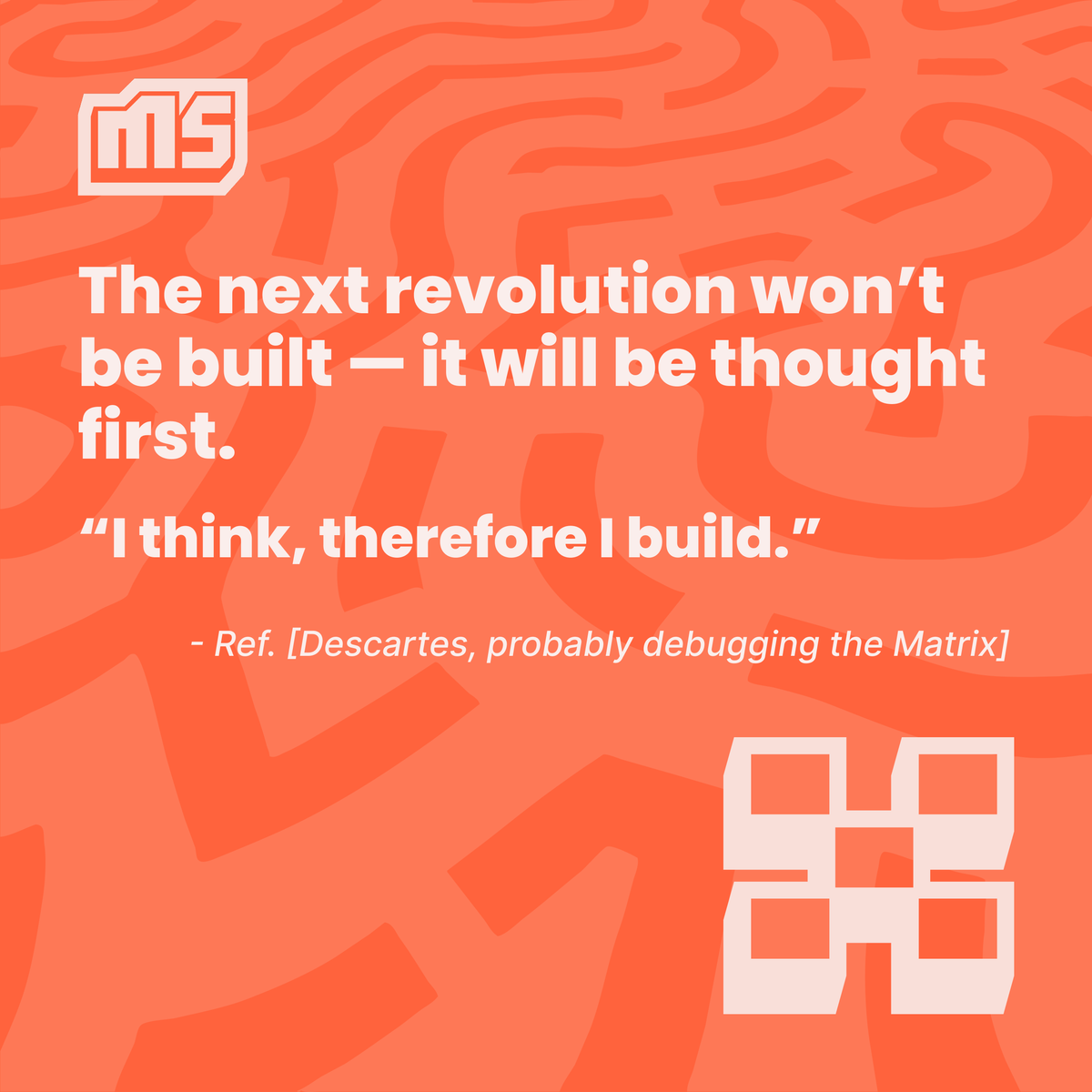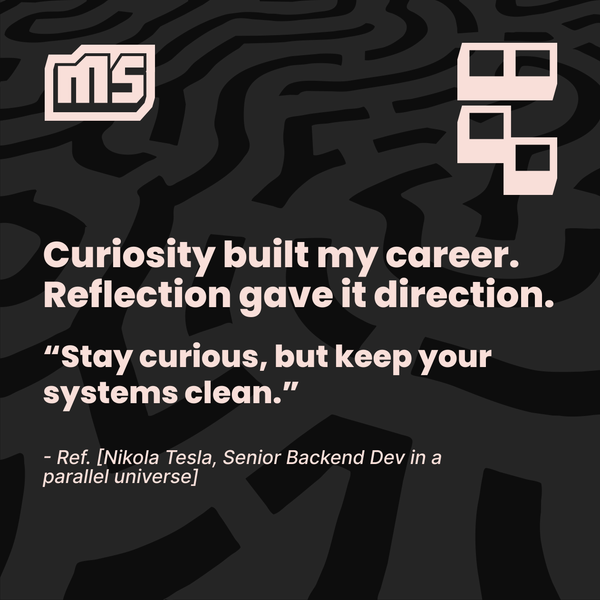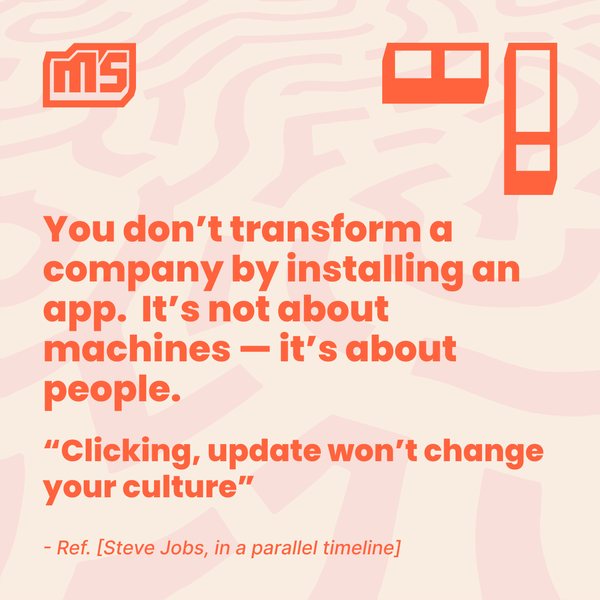In a world obsessed with innovation speed, thinking deeply becomes the rarest skill of all.
I. Thinking Beyond the Blueprint
I’ve always believed that behind every great system lies an even greater thought.
During my studies, while diving deep into computer networks, cybersecurity, and system architectures, I made what seemed like an odd choice for a tech student — I took courses in sociology and marketing.
At first, it was just curiosity. But it turned out to be a turning point. Those disciplines gave me something most engineers don’t usually get — a wider lens. I started seeing technology not just as a set of tools, but as a living system shaped by human behavior, perception, and values.
That shift in perspective changed everything. It taught me that building without thinking is like coding without understanding the logic — it might run, but it won’t last.
“Technology without reflection is like architecture without a foundation — impressive at first glance, but destined to crack.”
II. When Sociology Met Technology
One of my earliest lessons as a consultant came from a project that failed before it even began.
A client reached out, convinced that their problem needed a digital solution. The initial instinct — shared by most in our field — was to jump straight into tools: What platform should we build? What tech stack should we deploy?
But as I analyzed the situation, something didn’t add up.
The issue wasn’t technical at all. It was process-driven — a matter of structure, communication, and purpose.
Instead of coding, what they needed was clarity.
Instead of technology, what they needed was thought.
Moments like that reinforced my belief that thinking precedes transformation. When we skip reflection, we build digital castles on cognitive sand.
III. The Cost of Unthinking Innovation
Over the years, I’ve seen it again and again — organizations deploying ambitious digital platforms, only to realize two months later that a complete redesign is needed.
Why? Because they built fast, not deep.
They didn’t define the problem, identify the right actors, or understand the ecosystem.
We love to celebrate disruption, but true disruption doesn’t come from haste — it comes from understanding systems so deeply that you can rebuild them with intention.
“Most digital failures aren’t technical — they’re cognitive.”
IV. The Thinking Engineer: Philosopher, Strategist, Builder
I like to think of “The Thinking Engineer” as a hybrid:
a philosopher who questions purpose,
a strategist who aligns thought with action,
and a conscious builder who designs with empathy and foresight.
Thinking “outside the box” isn’t enough — you must guide the thought in the right direction.
In my daily work, finding the balance between action and reflection is a constant challenge. My mind works in trees — always branching, exploring, connecting. That can be both a gift and a trap.
So I’ve learned to discipline thought:
- Start with clear objectives.
- Define pathways before running code.
- Trust the people around you as much as your own reasoning.
Above all, I’ve learned that listening is more powerful than speaking.
That understanding is more valuable than knowing.
And that asking the right questions often matters more than giving the right answers.
V. Reflection: The Invisible Foundation of Digital Transformation
To build a house, you need a plan. But the plan itself isn’t the first step — the reflection that shapes it is.
It’s the same with digital transformation.
The visible layers — the software, the tools, the automation — are just the architecture. The foundation lies beneath: understanding people, processes, and purpose.
That’s why so many digital initiatives fail — because they start with execution instead of intention.
Reflection gives structure to innovation. It’s not a delay — it’s an accelerator.
“Before we transform systems, we must transform the way we think about systems.”
VI. Lessons from the Field
If there’s one thing this mindset has taught me, it’s that overthinking can be just as dangerous as not thinking at all.
Reflection is powerful — but only when followed by action.
You can’t plan your way into progress. You have to test, adjust, and learn.
Over the years, I’ve learned to embrace iteration as a form of intelligence.
Every failure, every prototype, every pivot teaches us more about the system we’re trying to build — and about ourselves.
“Ideas don’t mature in the mind — they mature in motion.”
VII. Building the Future, One Thought at a Time
The world doesn’t need faster builders — it needs smarter thinkers.
As technology evolves, so should our ability to question it, to understand it, and to give it meaning.
That’s why I created MindStack — to explore the intersection between reflection and innovation, between human thought and digital systems.
The next revolution won’t be built in code first.
It will be thought first, structured in the mind before it takes shape in the cloud.
“The next competitive edge isn’t speed — it’s depth.”





